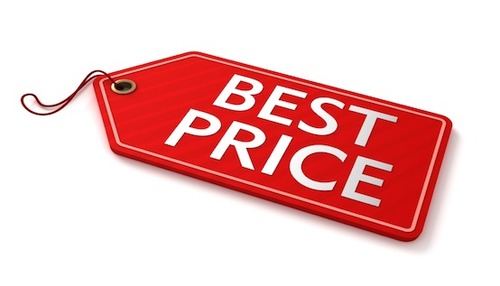
Are your prices driving your customers away? Are they overpriced or are they too low? Pricing your products on Etsy can become quite a tricky process. This process is a prevalent problem for all different types of shops on Etsy. You want your products to be taken seriously, to not be considered ‘cheap’, yet you also want to turn a profit on your hard work without driving away customers with unreasonable prices. The key to this is meeting halfway, finding balance between the two extremes.
Too Low (Viewed as ‘Cheap’) <—————(The Jackpot)————-> Too High (Overvalued)
There are multiple factors to take into account when attempting to find this equilibrium in your pricing. Factors such as competitors’ prices, uniqueness of the item, and the longevity of the item all have an impact on the final price point of your items. First as a reference point I always recommend beginning with the tried and true formula.
Materials + Labor + Expenses + Profit = Wholesale // Wholesale x 2 = Retail
For materials make sure that you’re simply factoring in the material used to create the one item itself. Factoring in a full bundle of yarn into the equation when you only used ¼ of the bundle is unreasonable and will sabotage the true price of your item.
Labor encompasses all of the work that was put both into creating the product and listing the product appropriately on your shop. This includes the time creating the product, photographing, listing it properly, and the time marketing the product.
Expenses include the Etsy listing fees, PayPal fees, advertising fees, rent, utilities and any other expenses that were incurred as a result of creating the item. And if you were not tracking your expenses, this would be a great time to start! It will help in more ways than one.
The profit number in this equation is often determined on your own personal valuation of the item and what extra cash you believe it is worth. This is often where you take into account competitor prices and things like uniqueness of the item and what it means to the artist.
Once you’ve figured out the approximate price of your item through this equation, it is recommended you now do some extra research to narrow it down to your final price point.
Reaching out to the customer base goes a long way in figuring out whether to bump your prices up or down. If you choose to keep your prices at a higher point than fellow competitors, make sure you justify as to why. Make sure the customer knows what the item means to you as an artist, the effort that went into it and the creative process that culminated in the completion of the item(s). Understanding the meaning behind the item ends up giving it more value, which in turn allows you to price your item accordingly. Also, the role of your item in the consumer’s life can also allow for a bump in profits. If an item you are selling is meant to save money in the future for the consumer, you may adjust the price accordingly as well. In the end the consumer will end up making that money back through the use of the item, which once again justifies a slightly higher price point.
We here at Now In Store hope that these tips can assist you in pricing your items appropriately in your Etsy shop. The right prices go a long way in determining the success of your shop and most importantly influence your customers to keep coming back for even more well priced items!
Good Luck and happy etsying!
Lyle Niblock

